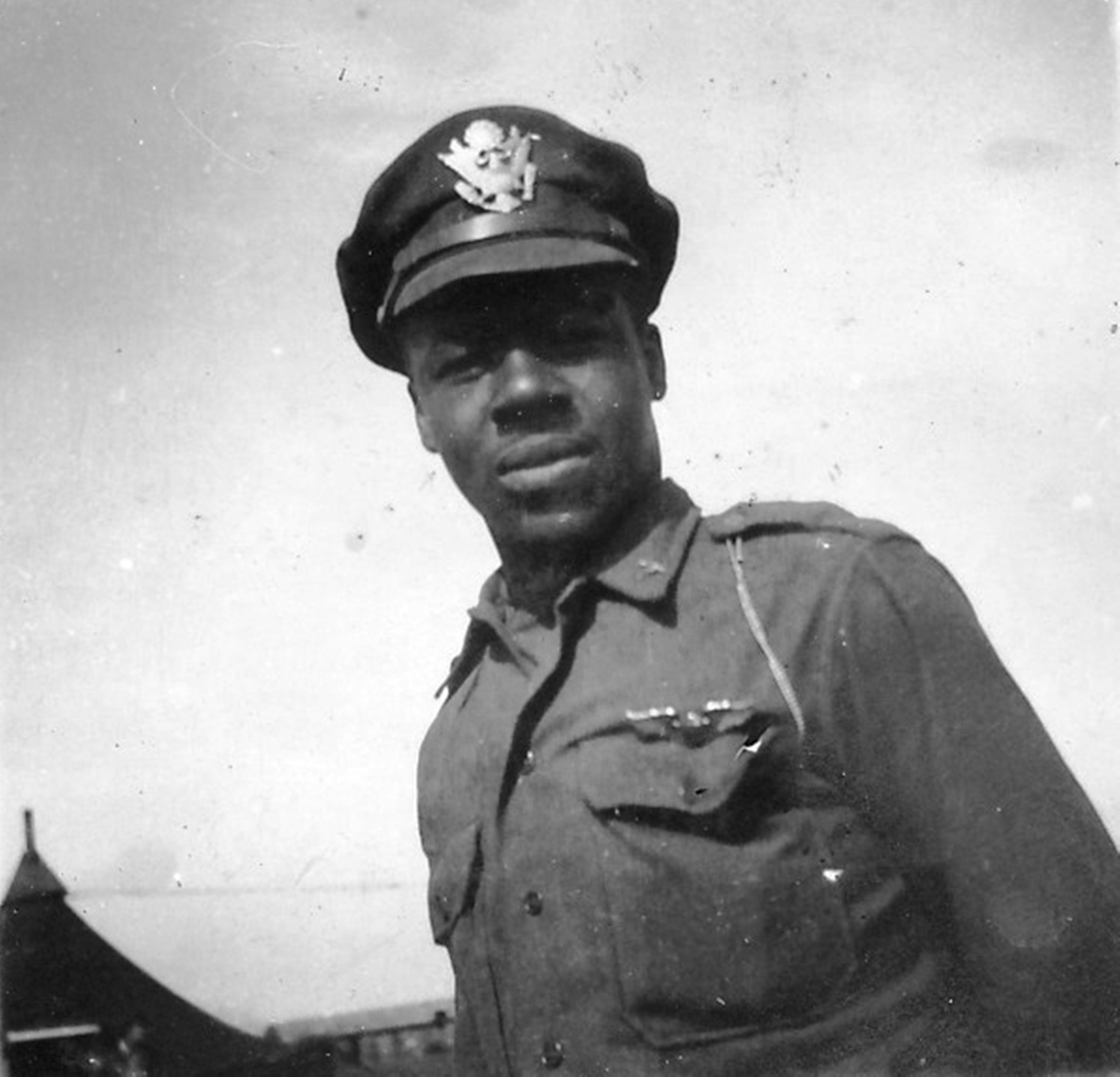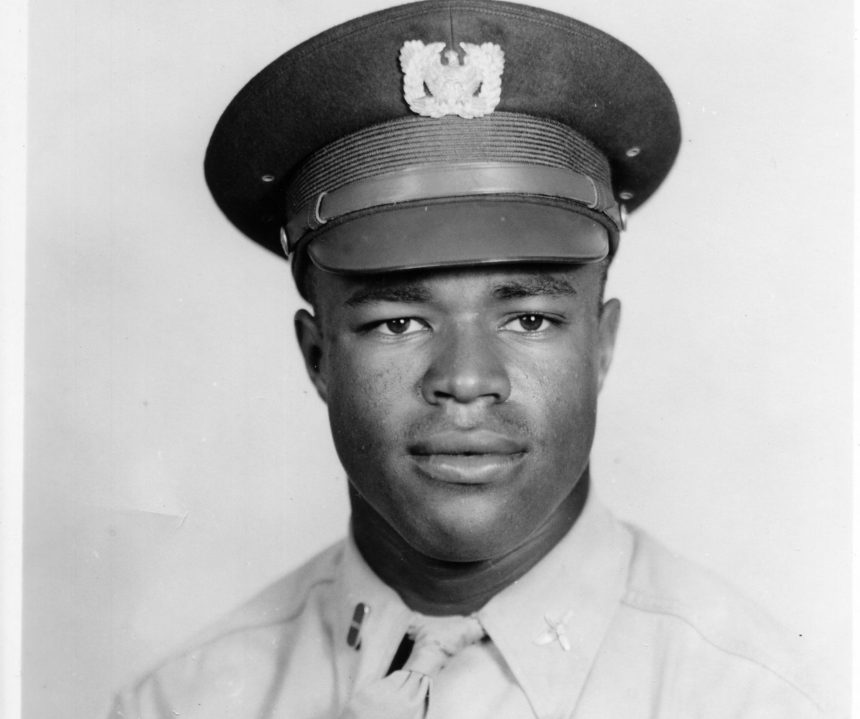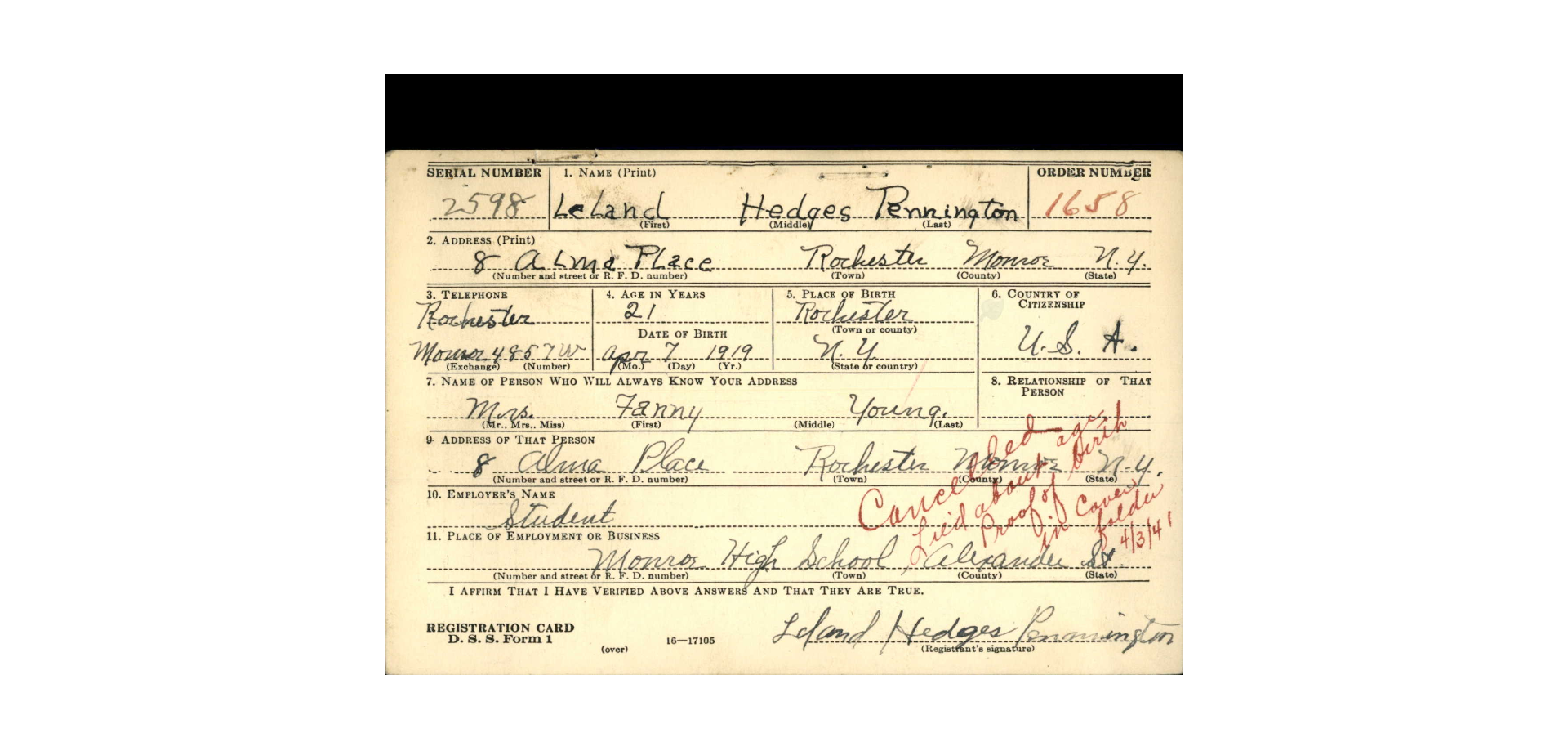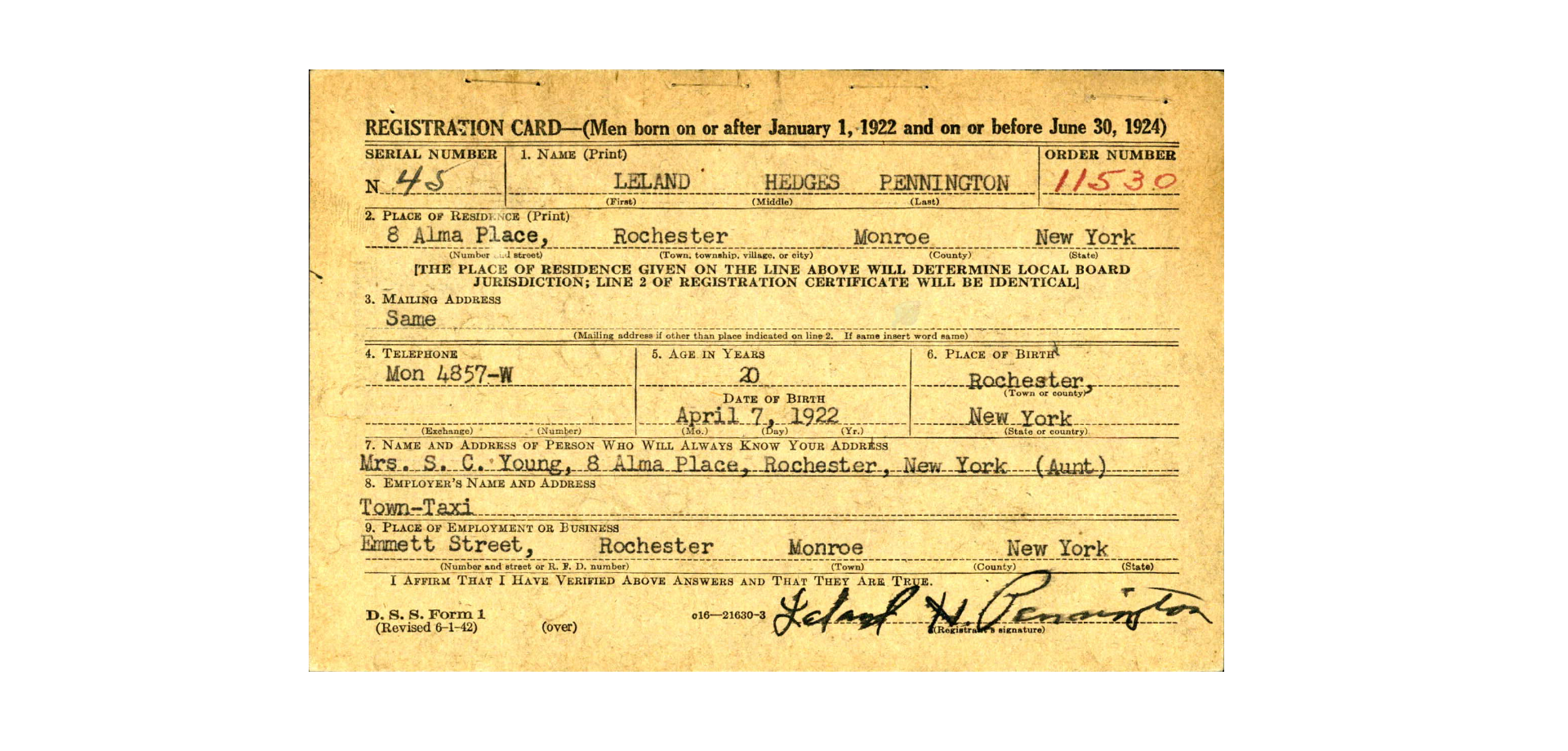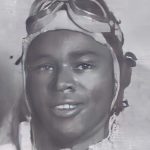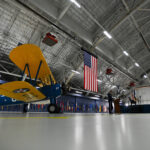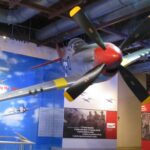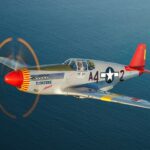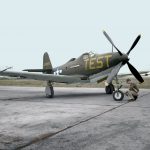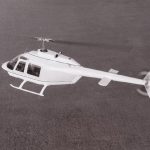An effort to honor a local MIA Red Tail takes-off, again
(…continued from Part Three)
As many legendary combat pilots have once said “So…there I was.” Although certainly less urgent than fighting for my life in the skies, I was now sitting at my desk assessing my plan of attack on a binder full of materials that I had amassed on Leland Pennnington, since beginning the project. I was processing the ordeal of having recently lost my dad, but this little sortie of mine was providing a nice, productive distraction. I had wanted to scan in all the documents I had collected and convert them to digital for the sake of organization and ease of recall as needed for future project missions. Now, I went full steam ahead and got everything uploaded. As I scanned the documents, I had remembered things that I had forgotten in the years since I began this effort. It was a neat little trip through time, and my energy began to build once again.
Before putting the project on hiatus, I had reached out to Jimmy Lanham’s grandson, Jim (named after his “pappy.”) I saw the name Jim Lanham make a post in a Tuskegee Airmen group I was part of on Facebook, and immediately my mind recalled that very name from Leland’s MACR. 1st Lt. Jimmy Lanham was one of Leland’s wingmen, who provided a narrative in the report. I immediately added and messaged this man on Facebook, and we were both amazed that we had found each other. After nearly 80 years since his grandfather flew with my guy Leland Pennington, we had made their friendship live on through our own. We keep in touch, and message every so often about anything either of us have discovered as we continue to research our Red Tail heroes’ pasts.
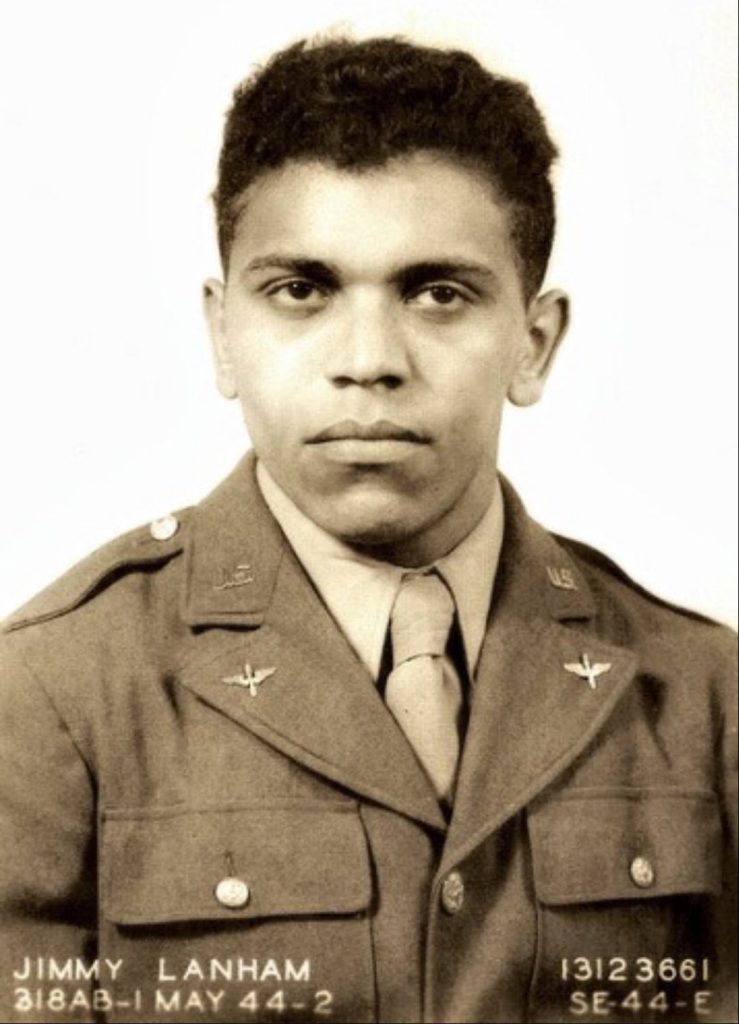
The project was gaining momentum once again. It was beginning to feel like it did in the beginning, a certain energy seemed to be pushing the throttle forward. I continued to make new discoveries. My Aunt. Sally Parker, is a genealogical researcher. She helped me find Leland’s Draft Cards. He, like many other young men, tried to enlist before Age 18, and we managed to find both his “denied” and his “of age” draft documents. It made me chuckle a little bit to see that. He, and countless others, wanted so badly to serve and fight for what was right. It’s hard to not be tickled by that.
Since the beginning of the project and my quest for learning all I could about Leland’s service, I had wanted to find details on the missions he flew, and also the exact reason why he went missing in action. At the outset, I tried diligently to uncover these mysteries. Unfortunately, the Air Force Historical Research Agency, National Archives, Smithsonian, and Tuskegee Airmen Inc all had no further information to provide. I asked around online, and at the time (2012-2013), there seemed to be a consensus that many of these records I was searching for were lost shortly after the conclusion of World War II. If I am remembering correctly, I was told by a few internet researchers that many of the pilot’s flight logs, “Individual Flight Records,” and other service documents were lost in a fire at the Air Force Archives. For the moment, I shelved that quest for knowledge, yet it always lingered in my mind.
Fast-forward back to 2024, the questions “what exactly did Leland fly, and when, and why did he go MIA?” still gnawed at me. As it had “been a minute,” I once again took to the online forums (now Facebook Groups and Sub-Reddits), in hopes that perhaps the information available had changed in my favor. Much to my surprise and excitement, they had. As a result of one of my information seeking posts in the Tuskegee Airmen Facebook Group, I received a private message from a member named Craig Huntley. An avid fan and researcher of the Red Tails, Craig sent me some information on Leland that I had never seen before. A document confirming Leland’s status as a “Replacement Pilot,” which was news to me. I hadn’t heard of such a pilot before, and was interested to learn more. A Replacement Pilot typically had limited experience, and was trained for the purpose of filling in the gaps for those aviators who were lost in combat. The pilot would join the unit often with little to no combat experience.
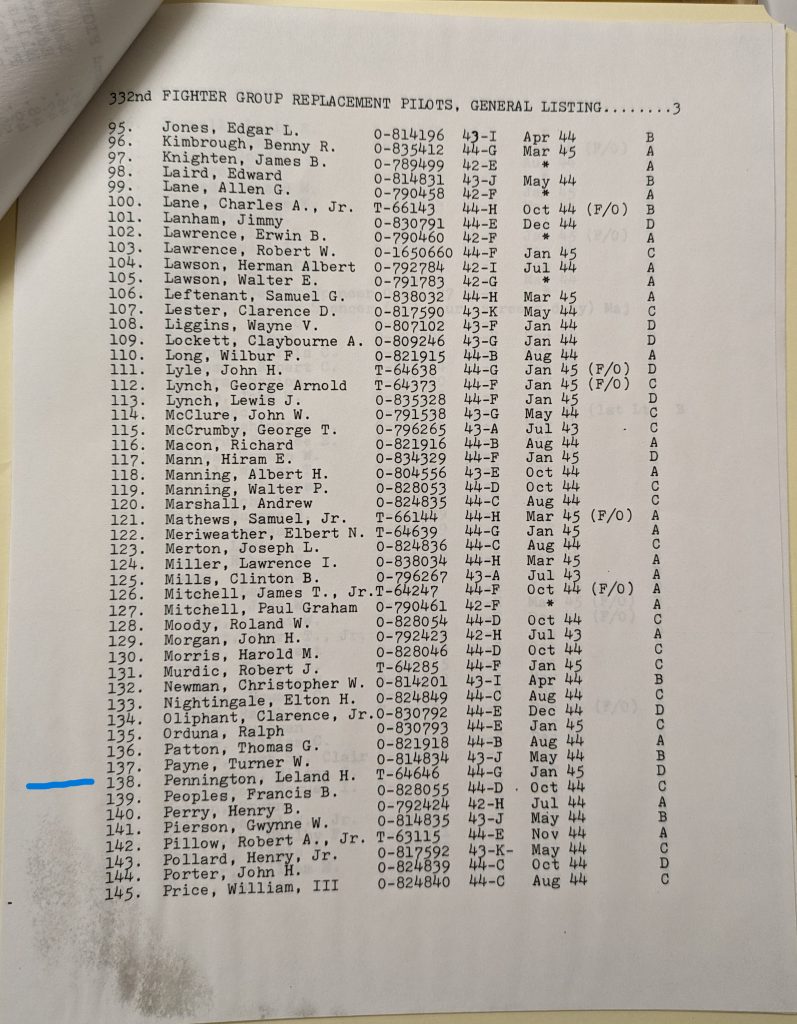
Craig also sent information about Leland’s transfer from the 302nd to the 301st Fighter Squadron, which occurred just about the same time he arrived at Tuskegee’s home-base in Italy, Ramitelli Airfield. Perhaps most significant of all of Craig’s offerings was a referral to a person who could acquire Leland’s Individual Flight Record. Geoff Gentilini with Golden Arrow Research was the man who could, allegedly, acquire Leland’s flight logs. According to both he and Craig, they were available through the St. Louis branch of the National Archives (vs. the DC branch that I had tried multiple times.) With the help of both men, we were able to acquire Leland Pennington’s Individual Flight Record.
After my hiatus from the project, I had forgotten the feeling I mentioned earlier, the goosebumps you get when opening a historical document with extremely pertinent information for the first time. I received Leland’s flight logs as a PDF, so there wasn’t the same physical stimulation as when I opened the envelopes from AFHRA and the Smithsonian. However, that didn’t make a difference in my reaction when I clicked on the document and saw “INDIVIDUAL FLIGHT RECORD – PENNINGTON, LELAND” at the very top. It hit me hard, and I’d be lying if I said that I didn’t start to get a little bit emotional. We had finally done it, we had found Leland’s flying history. This document contained every flight he took. Advanced Training in the AT-6 Texan, to Fighter Transition Training in the P-40 Warhawk & P-47 Thunderbolt, to his Combat Flights in the P-51 Mustang ‘Lucy Gal.’ After 13 years, it was all here, right before my eyes, finally!
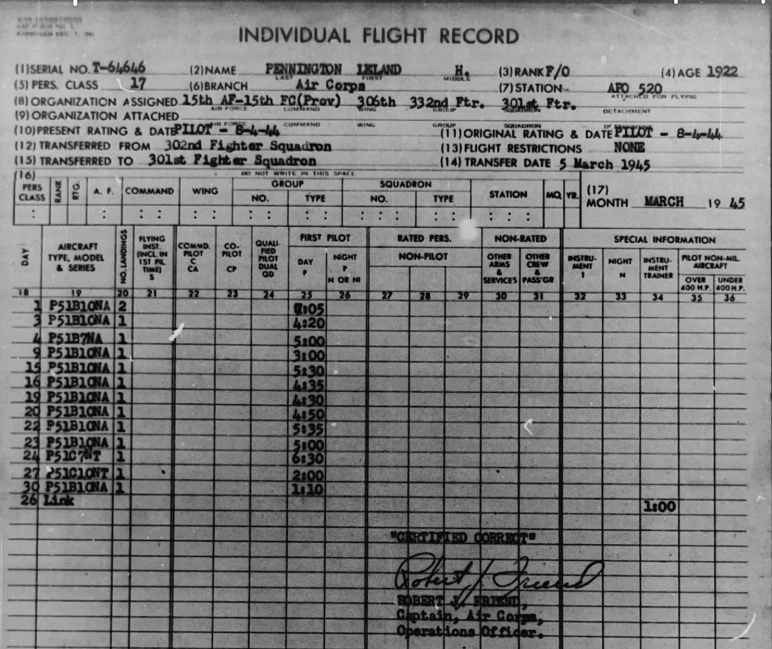
I read through the Flight Record, line by line. I typed each flight into an “E-Record” spreadsheet database, using Excel. Additionally, I researched each combat mission he flew in, according to the date in the record, as it aligned with the 332nd’s combat mission logs I found online. This allowed me to enter details specific to each sortie, such as the bomber group or photo recon aircraft they escorted, enemy aircraft encountered/destroyed, etc. As I typed in each entry, I pictured in my head what each training mission and combat sortie must have been like. Imagine…what he felt, what he saw? The goosebumps never stopped.
My friend Craig H. continued to be a ninja with Leland information. I’d get (and still receive) a random message from him with some kind of bombshell discovery about Mr. Pennington. The Individual Flight Record was enough of a gift from him, how much else could I ask for?! Well, as I found out, lots! Craig sent me 3 photos of Leland that I had never seen before, one of them potentially posing with ‘Lucy Gal’ (the two of us are still digging for confirmation on this.) When I opened the files of the photos, I once again got that feeling of shock and awe. There he was, Leland, looking at me. It was almost as if he was speaking to me, saying “I’m right here, keep digging, don’t quit.” (Continued in Part 5)
